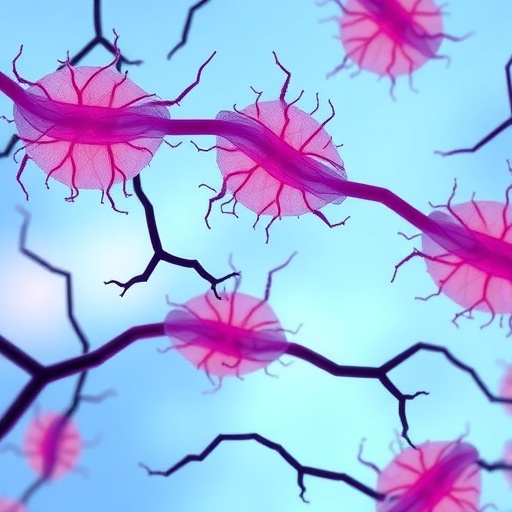In the relentless quest to enhance organ transplantation outcomes, one of the most formidable challenges remains the preservation of donor organs, particularly the liver. The biliary system, composed of delicate cholangiocytes lining the bile ducts, is notoriously vulnerable to cold-induced damage during the cold storage phase that precedes transplantation. Addressing this vulnerability could revolutionize transplant medicine. A groundbreaking study published in Protein & Cell unveils a novel approach utilizing organoids derived from hibernating Syrian hamster cholangiocytes, demonstrating remarkable resilience to cold stress and providing critical insights into mechanisms of cold tolerance.
Hibernating mammals embody natural models of profound cold resistance, enduring long periods of deep hypothermia without sustaining organ damage. Syrian hamsters, in particular, exhibit exceptional physiological adaptations that protect their tissues during extended bouts of torpor. Researchers leveraged this unique biology by isolating intrahepatic cholangiocytes from Syrian hamsters and cultivating them into three-dimensional organoid cultures, termed shICOs. These organoid systems mimic the intrinsic cellular environment and functionality of liver bile duct epithelial cells, offering an unprecedented platform to investigate cold resistance at the cellular and molecular levels.
Comparative analysis between shICOs and organoids derived from mouse cholangiocytes (mICOs) under cooling-rewarming stress revealed a striking divergence in survival outcomes. While both organoid types were subjected to equivalent hypothermic conditions mimicking organ preservation protocols, shICOs demonstrated superior viability and retained functional integrity significantly better than mICOs. This enhanced survival underscores the impact of evolutionary adaptation mechanisms inherent to hibernators, which confer protection against oxidative and metabolic stress induced by hypothermia.
At the mechanistic core of this cold resilience lies an amplified cellular capacity to counteract ferroptosis, a form of programmed cell death driven by iron-dependent lipid peroxidation. Under cold stress, elevated reactive oxygen species (ROS) and disrupted iron homeostasis typically precipitate lipid membrane damage, impairing cellular function or causing cell death. The study elucidates that shICOs maintain markedly reduced ROS accumulation and lipid peroxidation levels during cold exposure compared to mouse counterparts, revealing a robust anti-ferroptotic defense system integral to their cold tolerance.
Delving deep into the transcriptomic landscape, the researchers identified upregulated expression of pivotal genes governing iron metabolism and antioxidant defense in shICOs. The glutathione peroxidase 4 (Gpx4) gene, a critical enzyme mitigating lipid peroxidation, was moderately elevated, reflecting enhanced enzymatic detoxification capacity. Moreover, key iron regulatory genes such as ferritin heavy chain 1 (Fth1) and solute carrier family 40 member 1 (Slc40a1), which facilitate iron storage and export respectively, exhibited significantly higher expression in shICOs. This coordinated gene expression profile suggests a finely tuned iron regulatory network that preserves iron homeostasis and limits ferroptotic vulnerability during hypothermic stress.
These findings led to translational experimentation involving the introduction of deferoxamine, a powerful iron chelator, into preservation solutions. Applied to mouse bile duct tissues, deferoxamine mitigated iron-induced oxidative damage during cold storage, effectively enhancing cell survival rates. This pivotal observation suggests that pharmacological modulation of iron metabolism could be a viable strategy to fortify donor organs against cold preservation injury, bridging basic biological insights with clinical application.
The establishment of shICOs as a model system transcends mere academic interest, offering a versatile and reproducible platform to dissect mammalian cold adaptation. Such organoids provide a controlled environment to simulate cold ischemia-reperfusion injury, dissect molecular pathways, and screen protective agents without the ethical and logistical constraints associated with in vivo experimentation. This model advances the frontier of organ preservation science, guiding the rational design of next-generation cold storage solutions tailored to the vulnerabilities of biliary epithelium.
Beyond transplantation, the implications of this work extend to augmented understanding of ferroptosis regulation, iron metabolism, and cellular responses to oxidative stress—processes implicated in myriad pathological states including neurodegeneration, ischemic injury, and cancer. The synergy between evolutionary biology and cutting-edge organoid technology showcases the potential to uncover conserved protective mechanisms that can be harnessed therapeutically.
The research, led by a collaborative team including Chuman Wu, Changliang Wang, and Meifeng Gu among others, exemplifies multidisciplinary innovation spanning cell biology, transplant medicine, and molecular genetics. Their dedication culminated in insights that not only illuminate the extraordinary resilience of hibernating species but also pave a translational pathway toward mitigating biliary complications, which currently represent a significant cause of morbidity and graft failure post-liver transplantation.
As clinical transplant programs worldwide grapple with organ shortages and strive to maximize graft viability, the strategic incorporation of iron-chelating agents into preservation regimens emerges as an actionable intervention. More broadly, enhancing organ resilience through mimicking hibernator-derived cellular adaptations epitomizes a paradigm shift, transforming how we approach organ storage and potentially improving millions of transplant recipients’ outcomes globally.
Continued exploration of hibernator organoids promises to unravel further secrets of cellular cold tolerance, potentially extending benefits to other cold-sensitive tissues and opening new horizons in biopreservation technology. This novel intersection of nature’s adaptations and biomedical engineering heralds a bright future for transplantation science, where organ preservation transcends current limitations, enabling longer storage times and better post-transplant functionality.
Ultimately, these advances highlight the power of organoid technology not only to model complex physiological phenomena but to inspire tangible solutions to pressing clinical challenges. As this research area matures, it will foster development of precisely tailored preservation protocols, incorporating molecular and metabolic insights derived from expert study of resilient mammalian species, thus revolutionizing transplantation medicine.
Subject of Research: Not applicable
Article Title: Insights of mammalian hibernator-derived cholangiocyte organoids in improving liver cold preservation
News Publication Date: 1-Jul-2025
Web References: https://journal.hep.com.cn/foe, http://dx.doi.org/10.1093/procel/pwaf052
Image Credits: Chuman Wu, Changliang Wang, Meifeng Gu, Weiya He, Wenjun Deng, Wenjie Huang, Jiayu Liao, Changhui Li, Weilue Chen, Ruiping Chen, Ji Dong, Meiling Liu
Keywords: Cells




